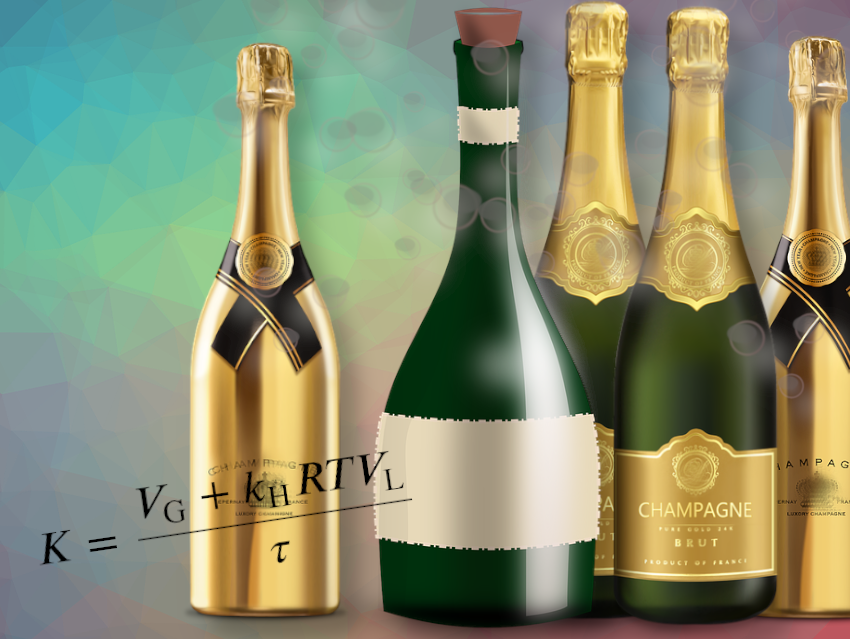During the second fermentation in champagne bottles, yeasts, sugar, and wine interact to produce not only additional alcohol but also carbon dioxide. As these bottles mature undisturbed for 15 months to several decades, they develop a wide range of complex flavors. However, during this aging process, the beverage gradually loses carbon dioxide, which slowly escapes through the sealed metal caps or corks. Gérard Liger-Belair, Université de Reims Champagne-Ardenne, Reims, France, and colleagues have investigated how the size of the bottle influences this phenomenon.
Champagne Castelnau, a partner of the research team in Reims, provided an exceptional vertical collection of 13 old vintages for the study. The team measured the concentrations of dissolved CO2 in consecutive champagne vintages, aged 25 to 47 years, stored in both standard 75 cL bottles and larger 150 cL magnum bottles. These bottles had identical bottlenecks with a standard diameter of 29 mm and were sealed uniformly using the same crown caps covered with a thin cork disc.
The researchers discovered that increasing the size of the bottle significantly increased its ability to hold dissolved CO2, resulting in greater effervescence when the champagne was tasted. Results indicate that increasing the bottle size substantially improves the ability to retain dissolved CO2, resulting in better bubble formation during tasting.
To understand the changes in CO2 concentration and pressure during aging, the team developed a model based on Fick’s law. They assumed a constant CO2 mass-transfer coefficient through the crown caps. Analysis of their experimental data revealed that the CO2 mass transfer coefficients were similar for both standard bottles and larger magnum bottles, averaging approximately K ≈ 7 × 10–13 m3 s–1.
The team then investigated how the shelf-life of champagne is influenced by its ability to produce CO2 bubbles when poured into a glass. A formula has been developed to estimate the shelf life of bottles that have undergone extended yeast aging, taking into account factors such as bottle shape and size.
Additionally, the researchers found that the developed model is universally applicable, regardless of the type of closure used during aging. By accurately determining the CO2 mass transfer coefficient (K) for each closure system, it becomes possible to predict the shelf-life of a champagne bottle, based on whether it was sealed with a crown cap or a cork stopper during initial fermentation. The researchers predicted a shelf-life of 40 years for standard 750-milliliter bottles, 82 years for 1.5-liter bottles, and 132 years for 3-liter bottles. Beyond these durations, the champagne would be flat.
- Losses of Yeast-Fermented Carbon Dioxide during Prolonged Champagne Aging: Yes, the Bottle Size Does Matter!,
Gérard Liger-Belair, Chloé Khenniche, Clara Poteau, Carine Bailleul, Virginie Thollin, Clara Cilindre,
ACS Omega 2023, 8, 22844–22853.
https://doi.org/10.1021/acsomega.3c01812




